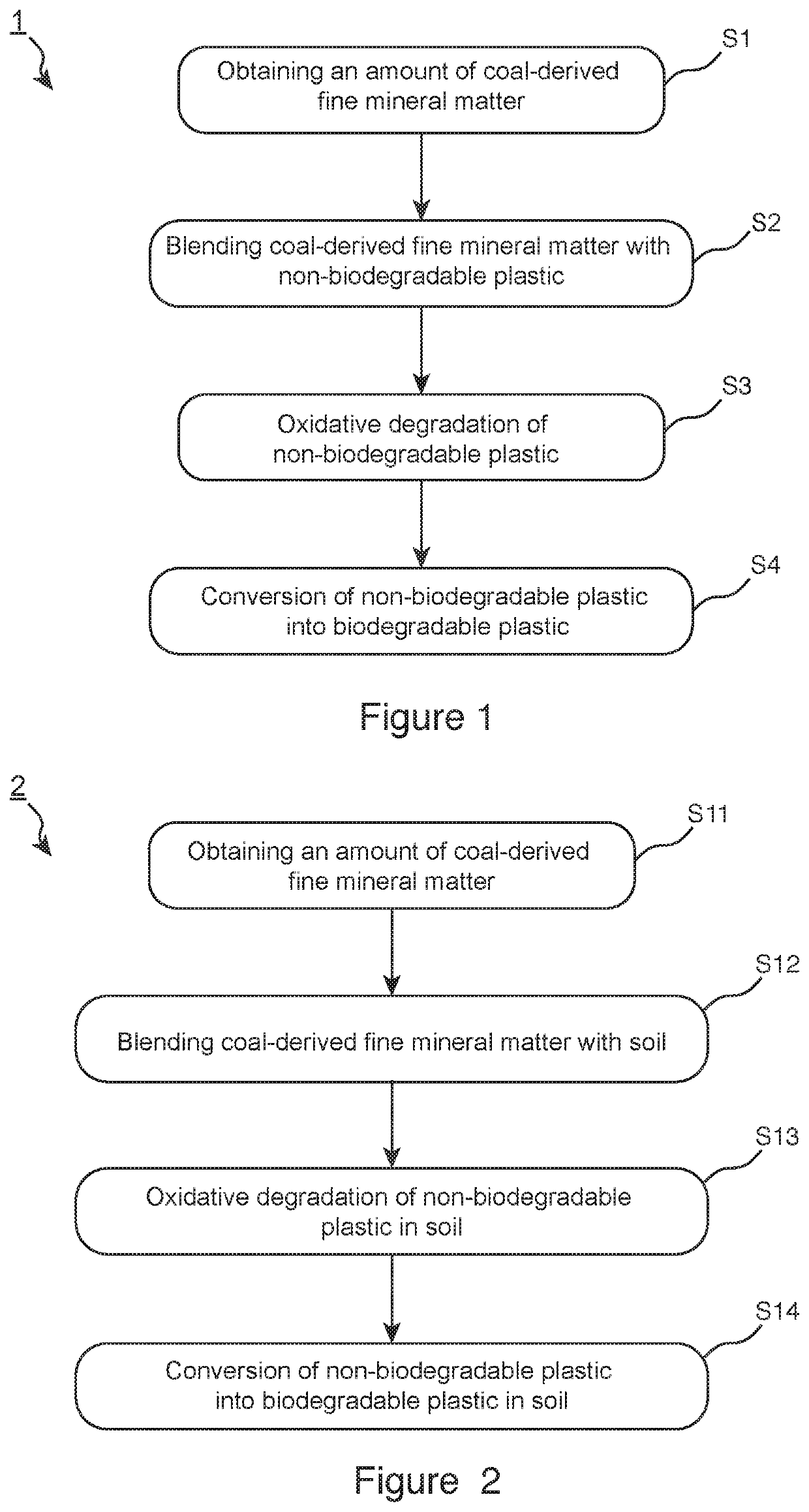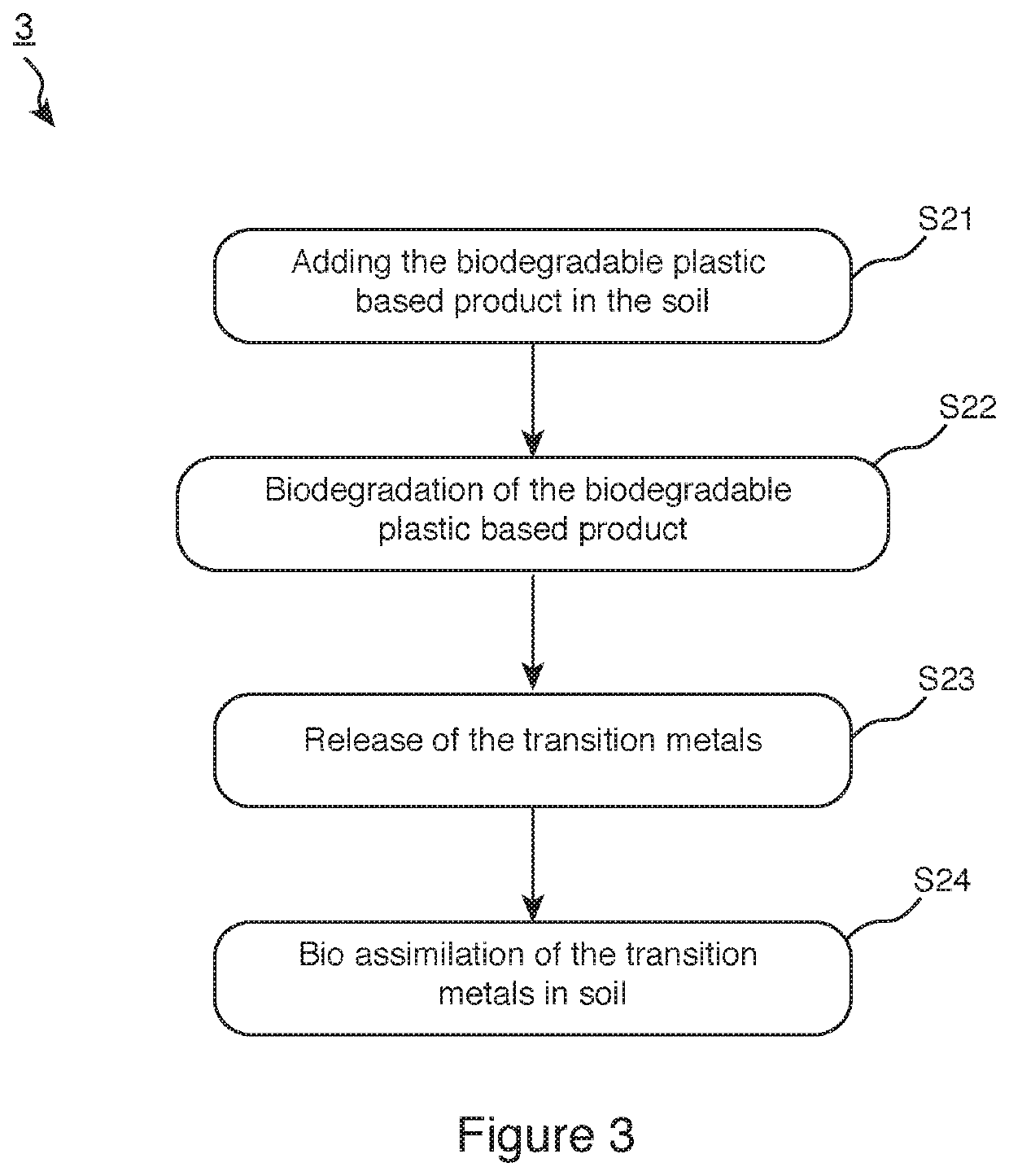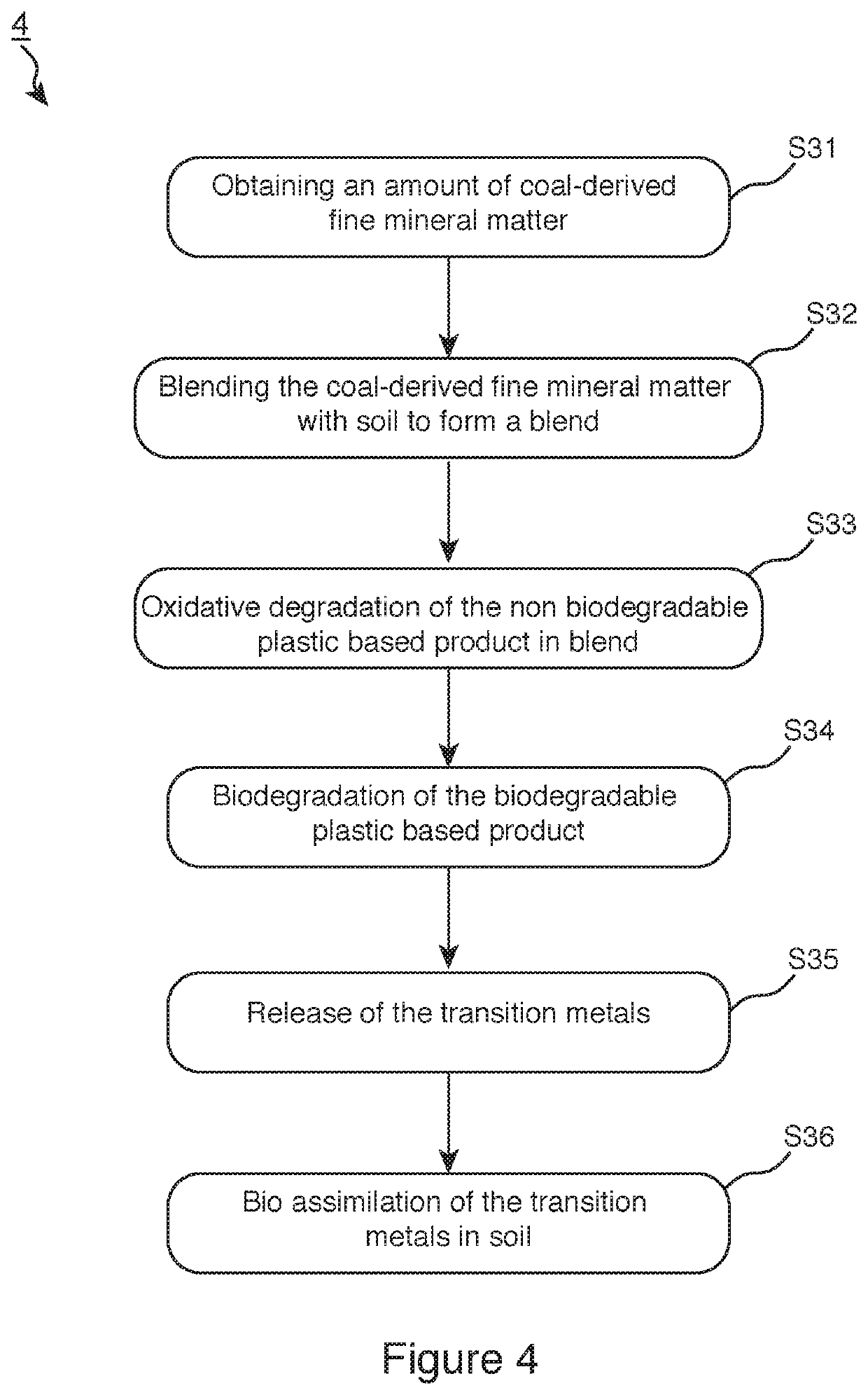Utilization of Fine Mineral Matter in the Conversion of Non-Biodegradable Plastic and in Remediation of Soils Polluted with Non-Biodegradable Plastic
a technology of biodegradable plastic and mineral matter, which is applied in the direction of potassium fertilisers, fuels, etc., can solve the problems of inconvenient cleaning of soil films, high cost of soil removal and film removal, and increase the nutrient availability of soils. , to achieve the effect of increasing the nutrient availability of soils
- Summary
- Abstract
- Description
- Claims
- Application Information
AI Technical Summary
Benefits of technology
Problems solved by technology
Method used
Image
Examples
Embodiment Construction
[0028]The following detailed description represents the best currently contemplated techniques for carrying out the invention. The description herein is not limiting, but rather is made merely for the purpose of illustrating the general principles of the invention.
[0029]A non-biodegradable plastic can be made biodegradable via an oxidative degradation process catalyzed in the presence of light, heat or pro-degrading additives. During this oxidative degradation the molecular chains of non-biodegradable plastic are reduced by oxidation, creating carboxylic acids, alcohols and ketones. The originally hydrophobic macromolecules become more hydrophilic and favour extracellular enzyme activity leading to subsequent breakdown of polymer chains (see e.g., N. C. Billingham, E. Chiellini, A. Corti, R. Baciu and D. W. Wiles, in ENVIRONMENTALLY DEGRADABLE PLASTICS BASED ON OXO-BIODEGRADATION OF CONVENTIONAL POLYOLEFINS, Springer US 2003). The pro-degrading additives used for oxidative degradati...
PUM
| Property | Measurement | Unit |
|---|---|---|
| particle sizes | aaaaa | aaaaa |
| particle size | aaaaa | aaaaa |
| temperature | aaaaa | aaaaa |
Abstract
Description
Claims
Application Information
 Login to View More
Login to View More - R&D
- Intellectual Property
- Life Sciences
- Materials
- Tech Scout
- Unparalleled Data Quality
- Higher Quality Content
- 60% Fewer Hallucinations
Browse by: Latest US Patents, China's latest patents, Technical Efficacy Thesaurus, Application Domain, Technology Topic, Popular Technical Reports.
© 2025 PatSnap. All rights reserved.Legal|Privacy policy|Modern Slavery Act Transparency Statement|Sitemap|About US| Contact US: help@patsnap.com



